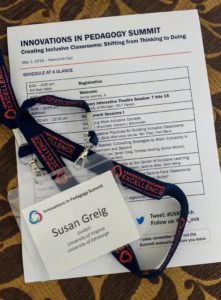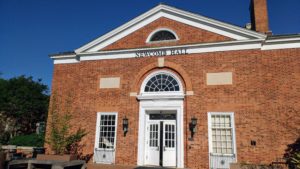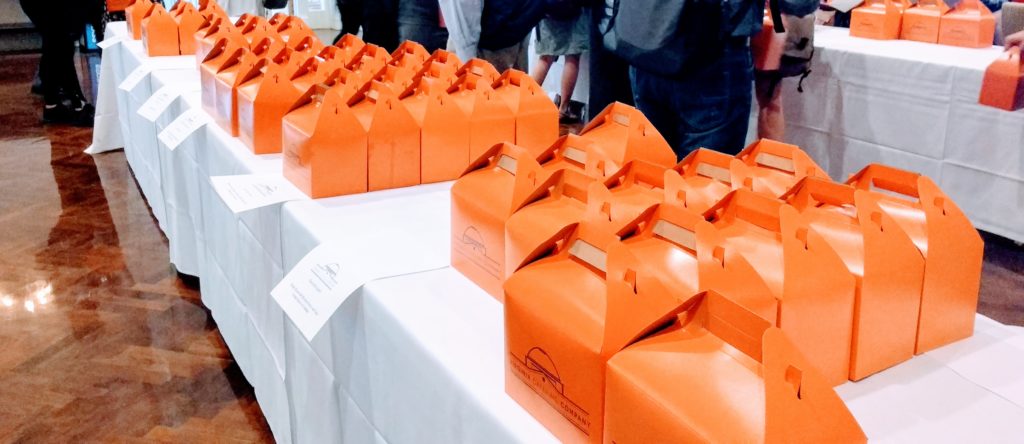Innovations in Pedagogy Summit, UVa – Wednesday 2nd May 2018
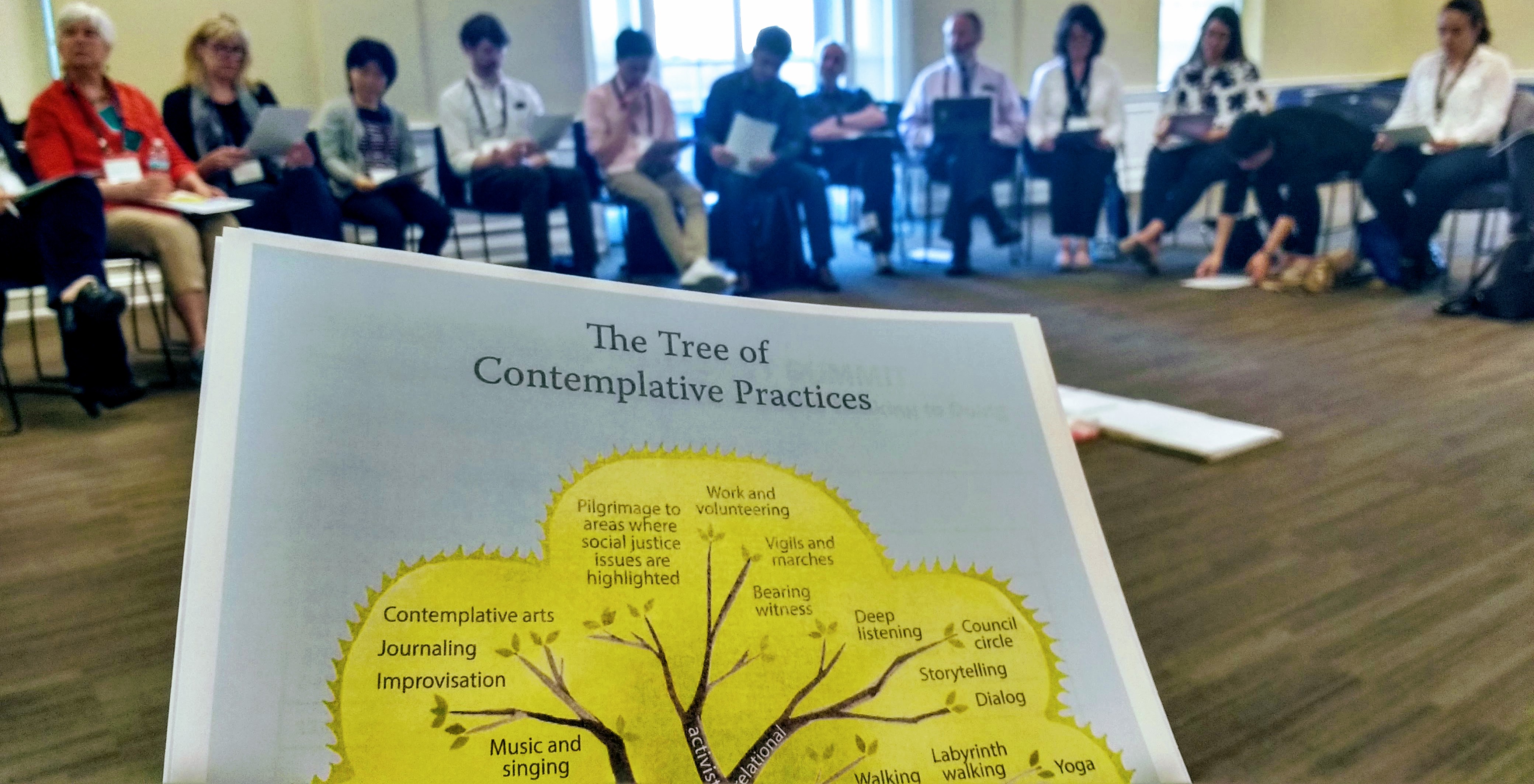
I attended a conference “Innovations in Pedagogy Summit” at the University of Virginia as part of an ERASMUS training visit to the University of Virginia. This is an annual conference for UVa staff organised by the Center for Teaching for Teaching Excellence. The theme was “Creating Inclusive Classrooms: Shifting from Thinking to Doing”. The welcome by Archie Holmes Jr (Vice Provost for Academic Affairs) framed the day by defining ‘Critical Inclusive Teaching’ as “…deliberately cultivating a learning environment where all students are treated equitably, have equal access to learning, and feel welcome, valued and supported in their learning.”

Critical Inclusive Teaching – on the left is Michael Palmer Director of the Centre for Teaching Excellence
The keynote presentation for this was a theatrical performance ” 7 into 15″
by the the University of Michigan’s CRLT Players.
We watched a cast of students actors performing scenarios around experiences of inclusion. This was framed by an excellent facilitator who set groud rules for our participation (see below) and got us to work through a series of reflective exercises around each piece.
Invitations to Interaction
- Share responsibility for including all voices in the discussion.
- Do not ask others to act as a spokesperson. (for a particular group)
- Listen carefully even if you disagree.
- You are encouraged to hold each other accountable.
- Work to be open to feedback.
- Engage in self-care.
This was really powerful, the students were excellent performers and there was something much more real about watching the scenarios acted out by students who could ‘be’ the characters they are playing.
I felt myself reacting personally to watching the young woman’s contribution being casually belittled by a well meaning professor. ‘Oh’ I thought ‘That’s how is happens’ – I recognise that.
In another sketch – a young man was asked by his German language teacher to say a sentence about who he loved – when he referred to the person loved as ‘he’ – the teacher corrected the gender to ‘she’. But the student hadn’t made a mistake.
I vividly remember the sketch in which an Asian man expresses his inner dialogue when confronted with engaging with the aggressive discussion style of a US tutorial.
It was very moving and thought provoking watching a young Black man reacting to the barrage of ‘microagressions’ – ranging from misplaced humour to outright abuse he received over a period of time.
There was something very different about watching real people perform than there might have been from hearing the scenarios read out or watching videos. Having the student performers in the room was an important part of this experience.
It was also interesting for me to be an outsider in that event – not knowing the rest of the participants made it a great deal easier, and some of it was uncomfortable. It must have been very intense to be part of for the UVa staff. I don’t think I’ve attended anything at my own institution that has addressed homophobia, sexism or racism in such a direct way.
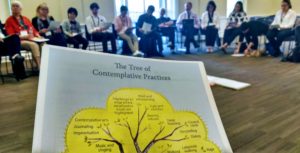
Tree of Contemplative Practices – (see the full image online).
Contemplative Practices for Building Inclusive Classrooms
Juliet Trail, Zaida Villanueva Garcis, Ran Zhao, Fred Maus
I walked into the room to find the chairs arranged in a wide circle – which is a change from many of the front facing sessions that I’ve attended at conferences. At this session we experienced three contemplative practices and discussed how these could be used in teaching. For the first was an activity we were invited to stand up and to pass a coin round a group from the backs of hands in silence. We were asked to be aware of our bodies and to consider how we felt as the coin neared us, during the hand over and as it moved on. (for me: nervous anticipation, fear of embarrassment if I dropped the coin, followed by relief as it moved on). It was interesting to draw my attention to my feelings (stronger than I’d anticipated for a straightforward activity) and to feel connected to this larger group – particularly relevant as I was a visitor.
We then had a meditation session while listening to music – which was less successful for me as I was very self-conscious (and a wee bit bored – but I do struggle a bit with slowing down). The third activity was about practicing compassion to myself and others – meditating with my hand on my heart being aware of the flow of breath – in for me – out for others. At the end of the session we were encouraged to write down our reflections about the experience and then to think about how this approach could be used in practice. This is interesting to me as I personally value contemplative practices like mindful meditation and yoga but have never considered using them in my own teaching context. I left the session feeling grounded and energised so my experience as a participant was good. It leaves me thinking about how and where I could use this technique in my own teaching?
Contemplative Sciences Center University of Virginia
Excellent “box lunches” were provided in bright orange (UVa colour) boxes. These were both delicious and highly practical, as you could eat them inside or outside in the sunshine.
Writing Across the Disciplines: Reflective Writing Bridges Between Differences
John Alexander, SHANTI, University of Virginia
My final session was also a practical, an interactive writing session with John Alexander who was my host for my visit to UVa. Here is how he described his approach in using reflective writing with his students:
“Reflective writing is transformative for my students, bolstering agency and more holistic and intuitive growth and creativity. And when that writing is done in a blog accessible to everyone in the class, the ferment of the learning community accelerates. Process-oriented writing expands and deepens connections both to self and others, which works effectively for students from all schools and disciplines and in working across differences. This has significant implications for students’ meaning-making and identity formation since it welcomes them where they are in their individual development. This practical approach nurtures authentic presence and deep listening.”
As a group we wrote short reflective pieces of writing to prompts John provided.
We started with a 5 minute writing prompt: Write about something that is currently meaningful to you. What does it feel like in your body mind and spirit to do that activity?
We then discussed the process of our writing as a group. Highlights of the discussion for me were:
‘writing is generative – the writing takes you to your ideas’
‘I write to feel – for me it’s part of resilience’ – to be in touch with emotions
The next writing prompt was:
Writing Prompt – How would you apply what you have learned here to your own writing or teaching practice or both?
We then discussed as a group what we had written:
Everyone thought it was important to get people used to writing in the first person (especially in academia).
The prompts used are important, they are like the focal point of a meditation. A few interesting options:
- What touched you?
- What surprised you?
- What did you learn about yourself?
- How do you hope to be different by the end of this session?
- Prompts that are not task oriented.
Reflection is transformative in several ways, it opens a door for us to be more in touch with ourselves and with others.
Observations
This conferences was really well structured and paced, running from registration at 8 am and closing at 2.30 pm. The sessions I attended were well structured and interactive, and plenty of time was allowed for the the sessions and for networking at registration and lunch. It was a pleasure to take part as I write this a couple of months after I attended I realise how much of it has stayed with me.


